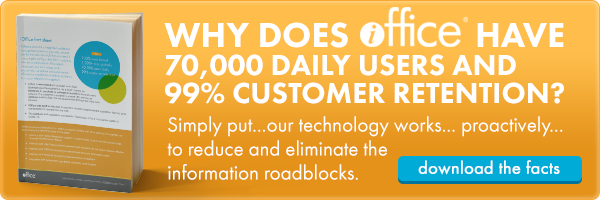How Benchmarking Helps Measure Facility Manager Initiatives


For folks who work tirelessly every day to manage space, it can sometimes be difficult to gauge their progress and find out exactly how successful their facilities management endeavors have been. Are they using rooms effectively? Are their office and desk layouts conducive to a productive workforce? Are they doling out resources properly so that each employee has enough?
In a vacuum, it can be difficult to discern the answers to any of the above questions. You have no real frame of reference. What does effective room use mean? Effective compared to what? Everyone’s welcome to posit their own subjective thoughts on facilities management, but it’s hard to determine whether they’re rooted in fact or conjecture.
That’s why “benchmarking” is a key term in facilities management that’s worthy of increased attention from the community. Are you curious about how your strategies stack up? Find a basis for comparison and look for direct, apples-to-apples correlations. Compare your office building to the other ones in your city, or your company to its competitors in the industry, or your own numbers this year to their counterparts from 12 months ago. Who’s better, and by how much? The answers can tell you a lot about your need to step up your facilities management game.
The Built Environment recently highlighted the need for intelligent benchmarking in facilities management. Michel Theriault, a top advisor in the facility management community in Canada, explained that without benchmarks, it’s hard to know how your office is progressing.
“Measuring results is the best way to improve what you are doing,” Theriault said. “Benchmarking is a form of measurement – where you measure against something else to see where you are lagging, identify the areas and take corrective action. Even if you think you are doing everything right, how do you know unless you compare? No organization is the best at everything and the same is true for yours. If you aren’t benchmarking, you can’t possibly be doing everything you should be doing.”
Are you interested in doing more benchmarking with your facilities? Here are a few tips to keep in mind.
Facility management is not all about numbers
There’s no doubt that using numbers to measure performance can play a role in facilities benchmarking. What percent of your building’s rooms are you using? How much electricity are you consuming? It’s a fallacy, though, to say numbers are everything. There’s also a place for using more subjective opinions in your analyses as well. When asking questions about aesthetic appeal or employee morale, for example, there are times when no statistical measure can tell the whole story.
Avoid illogical comparisons
No one ever gleaned true insights from comparing apples to oranges. How much are you paying in rent each month, and how much is your competitor? Well, if you’re renting a small building in a small town, and they’re in a large complex in a booming metropolis, you won’t really learn anything by comparing and contrasting. Try to benchmark your facilities in ways that make sense, comparing yourself to others fairly and logically.
Learn to question the status quo
Some people see benchmarking simply as a way to justify the status quo and avoid changes. That’s the lazy way out. Meeting benchmarks should never be an excuse to settle for less than the best. Say your competitors are using 55 percent of their office space effectively, and you’re outdoing them by using 60 percent. Does that mean you should stop trying, since you’re already ahead? Of course not. There’s always room for improvement, and successful benchmarking isn’t a reason to rest on your laurels.
Facility management is complex, and you won’t always think you have all the answers. By setting reasonable benchmarks, though, you’ll be able to track your progress.
